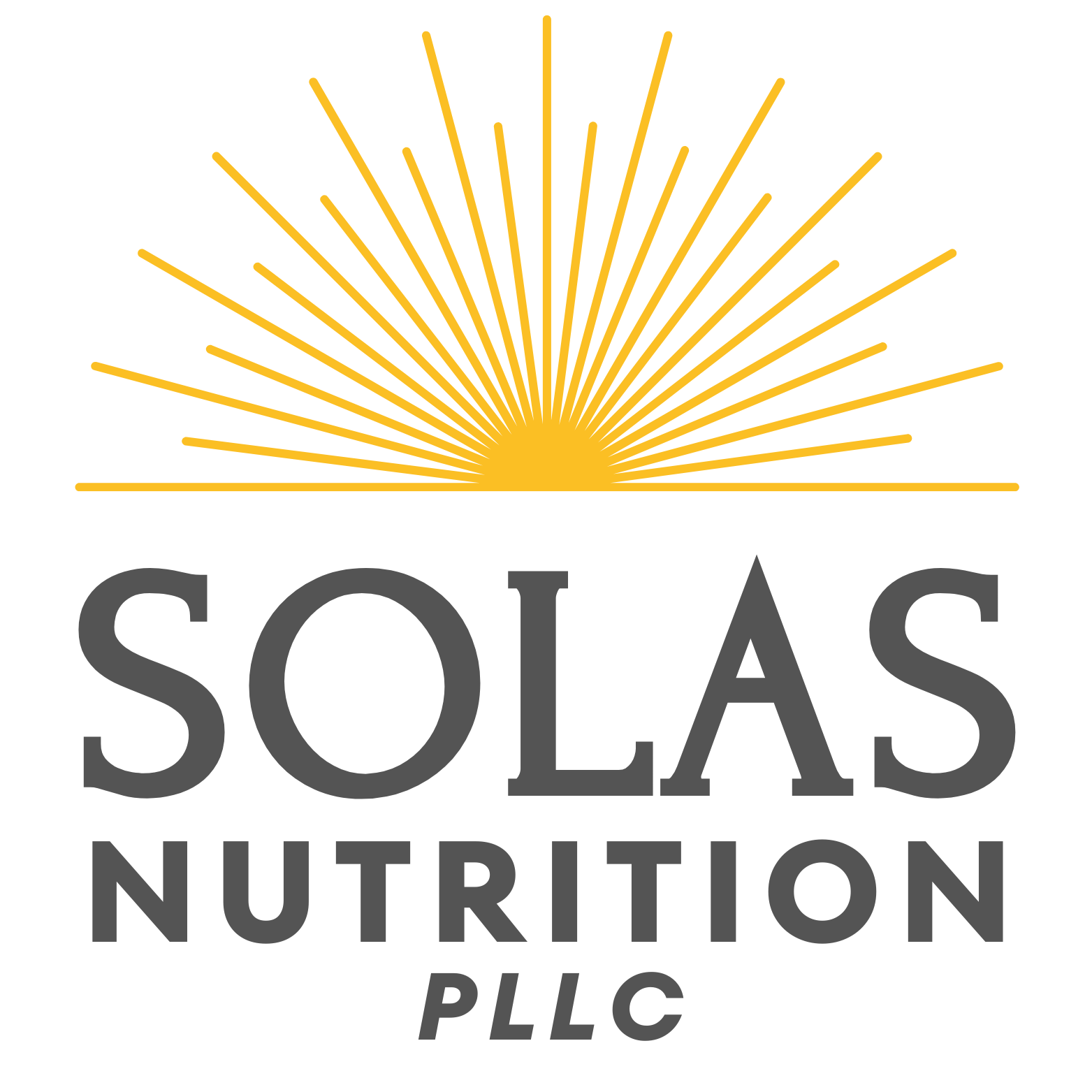Navigating Your Nutrition Journey on GLP-1 Medications
If you've just started a GLP-1 medication, like Ozempic®, Wegovy®, Mounjaro®, or others with semaglutide, liraglutide, or tirzepatide, you've probably felt some big shifts in your appetite and how your body feels after meals.
A lot of people notice they're getting full much faster than before. Maybe just a few bites in. Or that their hunger is much lower throughout the day.
Common Medication Effects
- Early fullness
- Reduced appetite
- Slowed digestion
How GLP-1 Medications Work
Slows Digestion
It slows down how quickly food leaves your stomach (that's called gastric emptying), which can really change how full you feel.
Brain Signals
It works with the parts of your brain that control hunger and fullness, helping you feel satisfied with less.
Early Satisfaction
It helps you feel satisfied sooner, and stay fuller longer, which can really support your goals.
Blood Sugar
It helps manage your glucose levels while also supporting steady, healthy weight loss.
The Small Meals, Big Nutrition Challenge
With "small meals" becoming your new normal, how do you still get "big nutrition"? When you're eating less, the quality of what you eat matters even more to keep your body well-nourished.
Why Nutrient Density is Your Superpower on GLP-1s
Nutrient density means squeezing the most beneficial nutritents, like protein, fiber, vitamins, healthy fats, into every bite. It's the opposite of "empty calories" that fill you up without really feeding your body.
When GLP-1s cut back your appetite, it's important to make every bite count. It's really about choosing quality over quantity to keep your body feeling its best.
Nutrient Density Comparison
Key Benefits of Nutrient-Dense Foods
Meeting Essential Nutrients
Cutting back on food can reduce your intake of essential vitamins and minerals, and since deficiencies are already common in people with obesity, losing weight might make it even harder to get the nutrients you need.
Supporting Energy Levels
Feeling tired on GLP-1s can happen. Medication side effects and sometimes from eating less. Making sure you're fueling your body well can really help keep your energy steady.
Preserving Muscle Mass
When you're losing weight, it's normal to lose some muscle along with fat. And with GLP-1s, research shows that lean mass loss can be a pretty big part of that. Increasing dietary protein is essential to offset excessive muscle loss.
Aiding Digestion
Whole, nutrient-dense foods, like fruits, veggies, lean proteins, and whole grains, are packed with fiber and other nutrients that help keep your digestion running smoothly.
Core Principles for Small, Mighty Meals
Adjusting to smaller portions takes a thoughtful approach. The key is packing in solid nutrition within your body's new limits. These five core principles can help you get the most out of every bite, even when your appetite's lower.
Eat Small, Eat Often
The Frequency Factor
The Shift
Rather than sticking with 2–3 big meals, try shifting to 4–6 smaller, nutrient-rich "mini-meals" or snacks spaced out through your day.
The Rationale
Smaller portions tend to feel better when your stomach's emptying more slowly. This can really help ease side effects like nausea, bloating, or that too-full feeling.
Try setting gentle reminders to eat every 2–3 hours. Since GLP-1s can really quiet those hunger cues, it helps you stay nourished even if you're not feeling hungry.
Protein Power
Your Muscle's Best Friend
Why It's Paramount
Protein really steps up when you're eating less overall. It helps you feel satisfied after meals and plays a key role in keeping your muscle strong and supported — especially while you're losing weight.
How Much?
Your personal protein needs are best figured out with a Registered Dietitian. But as a general guide, aiming for about 25–30 grams at main meals is a great place to start.
Chicken
25g/3oz
Eggs
6g/egg
Greek Yogurt
15g/½ cup
Tofu
10g/½ cup
Fiber Focus
Friend or Foe?
The Benefits
- Promotes digestive regularity
- Contributes to feeling full
- Supports gut microbiome
- Helps manage blood sugar
The Catch
Since GLP-1 meds slow digestion, fiber needs a bit of extra care. Too much at once, especially all in one meal, can sometimes make bloating, gas, or that overly full feeling worse for some folks.
It's best to start with smaller amounts of fiber and slowly increase as your body allows. If your digestion feels off, try choosing more well-cooked veggies instead of raw — they're often easier to tolerate.
Healthy Fats
Small Portions, Big Benefits
Their Role
Healthy fats are so important. They help your body absorb key vitamins (like A, D, E, and K), provide essential fatty acids, support overall health, and help you feel more satisfied after eating.
The Strategy
Try adding small portions of healthy fats to your meals, things like avocado, nuts and seeds (or their butters), and olive oil are great choices to nourish your body and keep you feeling satisfied.
Hydration Smarts
Sip Strategically
Why It's Crucial
Staying well-hydrated is such a key part of feeling your best — especially with GLP-1s, since it can really help ease side effects like nausea or constipation and keep dehydration at bay.
The Strategy
Try to sip fluids throughout the day, mainly water, but herbal tea or clear broth are great too, especially in between your mini-meals.
Daily Hydration Progress
8am
10am
12pm
2pm
4pm
6pm
8pm
Goal!
Your Practical Meal Planning Toolkit
Knowing the basics is one thing. Putting them into practice is another. So here are some tools and strategies that can help make planning small, nutrient-packed meals feel a bit more doable:
The Mini-Meal Blueprint: A Simple Formula
Think of building your mini-meals using a flexible template: Lean Protein Source + Fruit or Vegetable Source +/- Small Healthy Fat or Additional Fiber Source. It's an easy way to keep your meals balanced and full of variety.
Examples:
- Greek yogurt (Protein) + Berries (Fruit/Fiber) + Chia seeds (Fat/Fiber)
- Hard-boiled egg (Protein) + Sliced tomato (Vegetable) + A few whole-grain crackers (Fiber)
- Cottage cheese (Protein) + Pineapple chunks (Fruit) + Walnuts (Fat/Protein)
- Tuna pouch (Protein) + Celery sticks (Vegetable/Fiber) + Guacamole (Fat)
Planning Makes Perfect: Weekly Strategy Tips
Map It Out
Take a few minutes to jot down some mini-meal or snack ideas for tomorrow, or even the whole week if you're up for it. A little planning can make things feel so much easier.
Smart Shopping
Build your grocery list around your plan so you've got all the key pieces on hand. It makes putting meals together so much smoother.
Factor in Schedule
Plan a few grab-and-go snacks or easy-to-throw-together meals for those extra busy days, work, or appointments. It really helps to have something ready when life gets hectic.
Prep Like a Pro: Batch-Cooking Saves the Day
Cook Components Ahead:
Set aside a little time on a slower day (maybe the weekend) to prep a few versatile ingredients. It makes it so much easier to pull together mini-meals during the week.
Prep Ideas:
Grill or bake some chicken or fish, hard-boil a few eggs, roast a tray of veggies, cook up a small pot of quinoa or lentils, and wash and chop your produce. Just a bit of prep goes a long way.
Breakfast Ideas
- Scrambled Egg Plate: 1-2 eggs with sautéed spinach & ¼ avocado
- Greek Yogurt Parfait: Greek yogurt layered with berries and chia seeds
- Overnight Oats: Oats soaked with milk, protein powder, and diced apple
- Cottage Cheese Bowl: Cottage cheese with pineapple chunks and walnuts
- Egg Muffins: Mini frittatas baked in a muffin tin with eggs, veggies, and cheese
Lunch/Dinner Ideas
- Soup Meal: Bowl of lentil or bean soup with vegetables
- Protein Snack: Cottage cheese with sliced peaches
- Chicken & Quinoa Bowl: Grilled chicken breast, cooked quinoa, roasted veggies, and a drizzle of olive oil
- Salmon Salad: Flaked cooked salmon over mixed greens with cherry tomatoes and a squeeze of lemon
- Turkey & Veggie Stir-Fry: Ground turkey sautéed with bell peppers, broccoli, and snap peas, served over brown rice
Listen to Your Body: Your Ultimate Guide
These guidelines give you a great starting point, but your own body is truly the best guide. Tuning into how you feel, and what works for you, is so important on this journey.
Acknowledge Individuality
Hunger, fullness, and how you tolerate certain foods or meal sizes can vary. Not just from person to person, but even day to day, especially as your body adjusts to the medication or your dose shifts. What works great for someone else might not be the right fit for you (and that's okay!).
Mindful Eating
Practice tuning in while you eat. Go slow, savor your food, and really listen for those gentle signs of hunger and fullness. On GLP-1s, your hunger cues might feel quieter, so it's all about noticing the subtle signals and stopping when you feel comfortably satisfied, not overly full.
Track Symptoms (If Helpful)
If you're often dealing with side effects like nausea, bloating, constipation, or diarrhea, it can really help to jot down what you eat and when symptoms show up. A simple log can make it easier, for you and your care team, to spot patterns or triggers.
Adapt as Needed
Side effects can hit a bit harder when you're just starting GLP-1s or after a dose bump. In those moments, softer or liquid meals, like smoothies, yogurt, soups, or protein shakes, might feel better. As your body adjusts, you can slowly ease back into other textures. It often gets easier with time.
This really is a journey, and it's okay if it takes time to figure out what works best for your body on GLP-1s. Be gentle with yourself along the way. The goal is to find something that feels good and lasts.
Important Next Steps
This guide offers general info, but your journey is uniquely yours. Be sure to stay connected with your healthcare team. They're there to help you find what's best for you.
Consult Your Provider
Keep your prescribing doctor updated, especially if side effects linger or feel tough to manage. They can help make adjustments so you feel more supported and comfortable.
Essential for monitoring side effects and medication adjustments
Work with an RDN
It's really worth connecting with a Registered Dietitian who understands GLP-1s. They can help you create a personalized nutrition plan that fits your needs and supports your goals.
Personalized nutrition plan tailored to your GLP-1 journey
Don't Forget Movement
While this guide centers on nutrition, movement matters too. Especially strength training, which really helps protect your muscle as you lose weight.
Helps preserve muscle mass while losing fat on GLP-1 medications
Remember: You're Not Alone
One of the best things you can do on your GLP-1 journey is build a supportive team around you. Your healthcare providers, especially those who specialize in nutrition and movement, are here to help you find your way and feel your best.
Conclusion: Thriving with Smart Nutrition on GLP-1s
Navigating nutrition on GLP-1s can be tricky, but it's also a great chance to build lasting habits. By focusing on "Small Meals, Big Nutrition"—smaller, frequent, nutrient-packed meals with plenty of protein, mindful fiber and fat, and steady hydration—you're giving your body the support it needs.
These strategies aren't just about managing side effects. They're real tools to help you feel your best, keep your energy steady, and most importantly, protect your muscle as you go. Try to see these shifts not as limits, but as empowering steps toward your long-term health and well-being.

